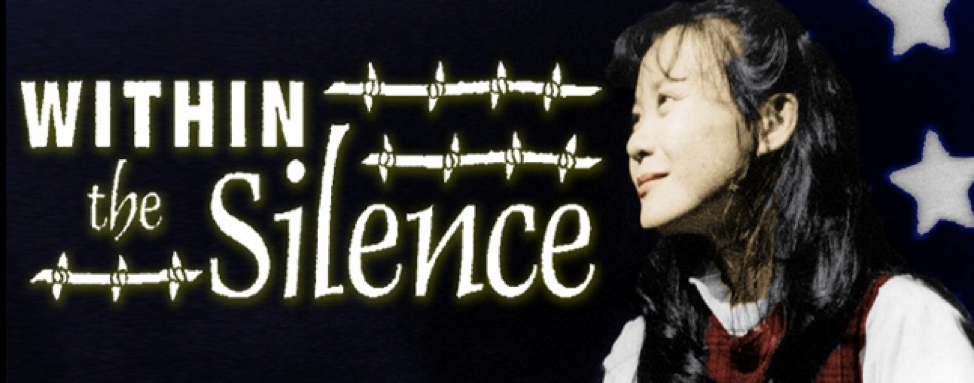Photo courtesy of www.livingvoices.org
The Executive Order 9066 of 1942 displaced many Japanese Americans, separating them from their families. Around 120,000 Japanese Americans living on the West Coast were forced to live in internment camps. Of the Japanese Americans forced into internment camps, none were found to be spies. In fact, only ten people were convicted of spying for the Japanese during this time, none of which were of Japanese descent.
The Japanese were America’s biggest scapegoats.
Ken Mochizuki’s Within the Silence follows a teenage girl, Emiko Yamada, or “Emi”, through her journey during this period of internment. This exhibit, which took place in the Joshua Green Foundation Theatre in the Museum of History and Industry (MOHAI), was performed by Rachel Rene and tells the story of the embarrassment and betrayal of the Japanese people through interactive storytelling. A montage of archival film and photos was projected on two screens and was accompanied by an interactive spoken performance.
I’ll admit that I was a bit confused when it started. Rene seemed to be ushering children into the theater, only to my realization that the performance had started and she was playing the part of Emiko Yamada as an elementary school teacher. As the sound of school children reciting the Pledge of Allegiance started playing in the background, Emi starts to reminisce about how the pledge’s meaning has changed for her.
The Yamadas’ love for America was like no other. They owned one of the biggest grocery stores in Seattle’s Nihonmachi, or Japantown and it was for this reason that the family felt such a strong sense of betrayal when Executive Order 9066 was passed. Immigrants who had done so much to assimilate and support their community were seen as traitors and aliens and longtime customers who were not Japanese stopped coming to the grocery store. Voiceovers from the video depicted the consequences of the Executive Order. For Emi, some of these consequences included her best friends refusing to hang out with her because they did not want to seem like “Jap lovers.”
Dialogue between Emiko and her brothers, Grant and Tommie, depicted what life was like in the internment camps. As their stay went on, their family became more and more disconnected. Emi’s mama was diagnosed with a severe case of diabetes, and when her papa was reunited with the family, he would not speak to anyone. Her brothers eventually found their own community and were not around as much.

Fumiko Hayashida, who lived on Bainbridge Island.
Photo courtesy of www.livingvoices.org
Through Rene’s performance, not a syllable was wasted. It felt like Emiko Yamada was my aunt, and through this performance, was telling me a bit about our family’s history. It was like we were synced, and I could feel her victories as well as her losses. By the end of the performance, I sensed a solemn mood in the small theatre, the minds of the audience yearning to learn more about Emi’s life and others like her—we wondered how America could have betrayed its citizens the way it did, we also wondered how a story set 70 years ago could have such a profound message considering today’s political climate. But I think this is the beauty of art. It gives he silenced a voice and shows us how such a simple performance can be so timeless in its message.
If you want to learn more about this performance, visit Within the Silence on Living Voices.
JORDAN CHAN | Amateur Historian | KXSU Arts Reporter

